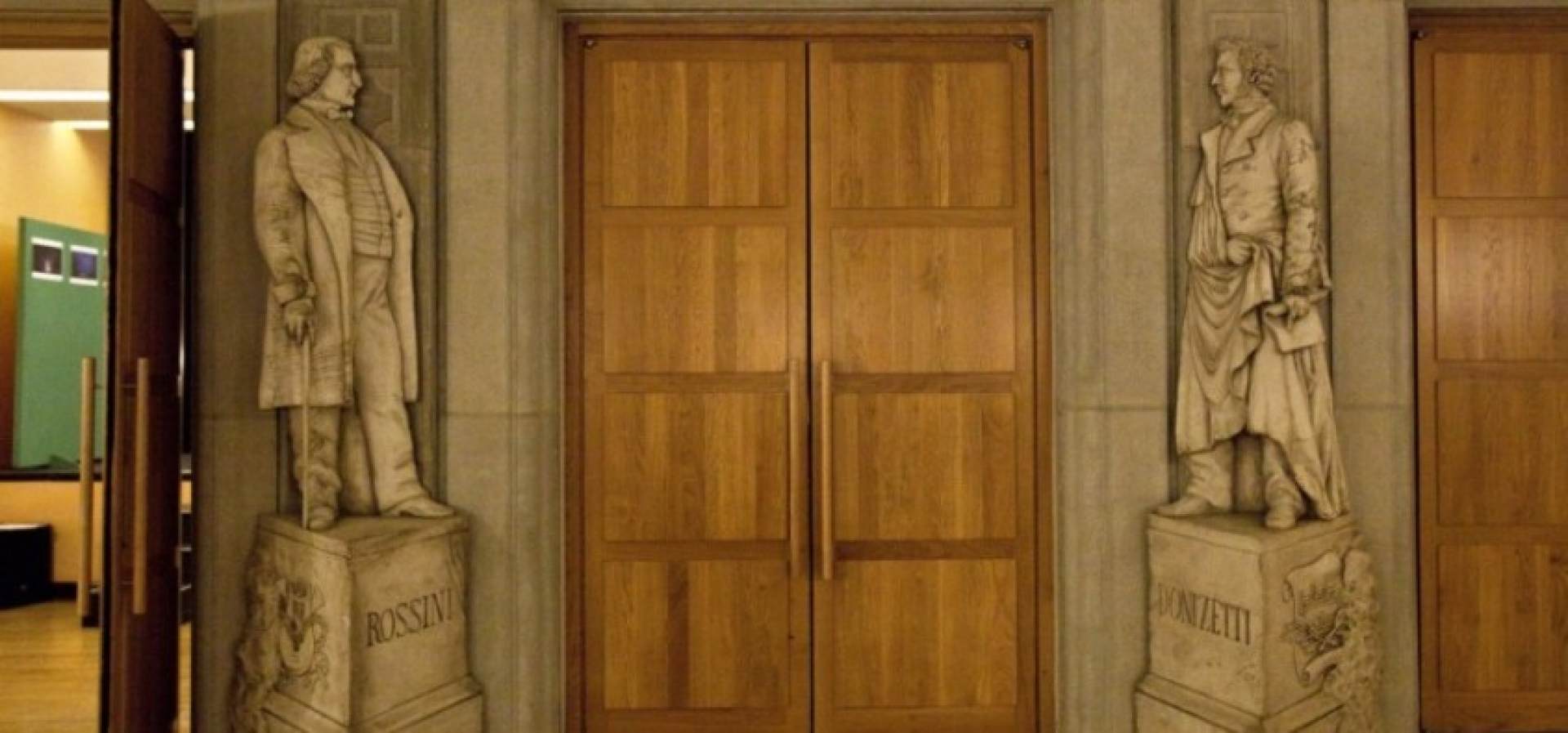Il diario di uno scomparso, La voix humaine
Mo | Tu | We | Th | Fr | Sa | Su |
IL DIARIO DI UNO SCOMPARSO
Music by Leoš Janáček
for contralto, tenor, three female voices, and piano, V/12
Libretto by Josef Kalda
LA VOIX HUMAINE
Music by Francis Poulenc
Lyrical tragedy in one act
Libretto by Jean Cocteau
Synopsis - LA VOIX HUMAINE
The curtain opens to reveal a bedroom where a woman (Elle) lies unmoving on the ground. Elle changes position once before finally rising. Although Elle makes to leave the room, the phone rings and Elle returns to answer it. Elle receives two wrong numbers before her ex-lover is able to get through to her. Elle lies to him, saying that she went out with her friend Marthe the previous night, and that she took one pill to help her fall asleep when she returned. The couple discusses their past relationship, and Elle blames herself for their problems, claiming, "Tout est ma faute." Throughout their conversation, they experience numerous telephone problems, and their connection finally cuts out completely. When Elle calls her lover's home phone, she discovers that he is not there and assumes that he is at a restaurant. He calls her back, and Elle reveals that she has lied during their conversation; instead of going out with Marthe the previous night, she took twelve sleeping pills in an attempted suicide. She then called Marthe, who arrived with a doctor to save her. Elle suddenly hears music in the background, and grows suspicious that her lover is at the home of his new girlfriend. Elle expresses her suspicions to him several times until the end of the opera, but he never admits to his true location. Elle also reveals her obsession with the telephone, explaining that she has slept with it in her bed for the past two nights. Their connection fails once again, and Elle panics. Her lover calls her back once more, and Elle informs him that she now has the telephone cord wrapped around her neck. Telling him she loves him over and over, she sinks into her bed and drops the receiver.
Program and cast
IL DIARIO DI UNO SCOMPARSO
for contralto, tenor, three female voices, and piano, V/12
Tenor: Matthias Kozioroski
Mezzo-soprano: Veronica Simeoni
Piano: Donald Sulzen
LA VOIX HUMAINE
A woman: Anna Caterina Antonacci
Piano: Donald Sulzen
Director: Andrea Bernard
Set: Alberto Beltrame
Costumes: Elena Beccaro
Lights: Marco Alba
New production by the Teatro dell’Opera di Roma
Teatro Nazionale
The current Teatro Nazionale, located in Via del Viminale on the corner of Via Agostino Depretis, was born as a cinema hall, Supercinema, built in 1925. The owner, ‘commendatore’ Urbano Rattazzi, committed the design to architects Arnaldo Foschini and Attilio Spaccarelli, along with engineer Giacomo Giobbe. Inserted within a pre-existent building, the hall was created with a 36m long and 30m wide room, and, initially, a 2,300 people seating plan, overhead seating area and galleries. Italian Stile Liberty interior decoration was enriched with golden plaster, paintings, stone and fabrics. Although its primary function was that of cinema hall, the presence of a prompter’s box means that other kind of shows, such as variety shows and curtain raisers, took place in alternation.
After WWII, the venue was used only as cinema hall, for which it was created at the very beginning.
At the end of the 1990s, Supercinema was bought by Rome Council and given to Fondazione Teatro dell’Opera di Roma as a further venue. In 2006, the last of many restorations was accomplished, giving the hall its current look, now able to host around 500 people.

 EN
EN DE
DE IT
IT FR
FR ES
ES RU
RU JP
JP RO
RO
 Seating plan
Seating plan 